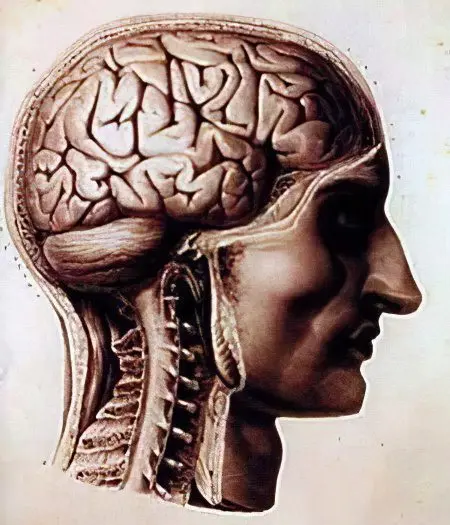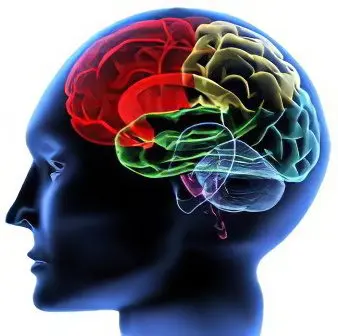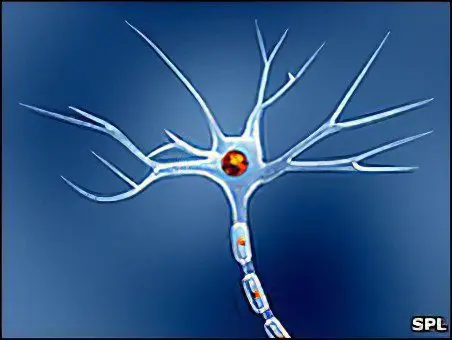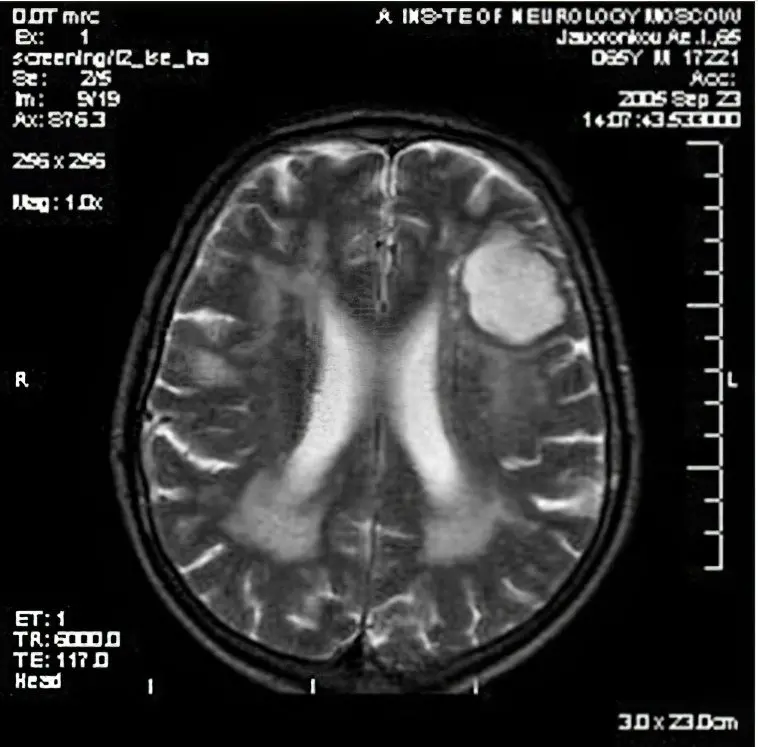Contents

The nervous system is responsible for the work and interconnection of all systems and organs of the human body. It combines the central nervous system, which consists of the brain and spinal cord, and the peripheral nervous system, which includes nerves extending from the brain and spinal cord. Nerve endings provide motor activity and sensitivity to all parts of our body. A separate autonomic (vegetative) nervous system inverts the cardiovascular system and other organs.
Diseases of the nervous system represent a wide and diverse field of pathologies of various etiologies and symptoms. This is explained by the fact that the nervous system is extremely branched, and each of its subsystems is unique. Most often, a violation of the functions of the nervous system has a detrimental effect on the functions of other internal organs and systems.
Types of diseases of the nervous system
All diseases of the nervous system can be divided into vascular, infectious, chronically progressive, hereditary and traumatic pathologies.
Vascular diseases are extremely common and dangerous. They often lead to disability or even death of the patient. This group includes acute cerebrovascular accidents (strokes) and chronically current cerebrovascular insufficiency, which causes changes in the brain. Such diseases can develop as a result of hypertension or atherosclerosis. Vascular diseases of the nervous system are manifested by headaches, nausea and vomiting, decreased sensitivity and impaired motor activity.
Infectious diseases of the nervous system develop as a result of the pathogenic effects of various viruses, bacteria, fungi and parasites. The brain is predominantly affected, while the peripheral nervous system and spinal cord are affected less frequently. Common diseases of this group are encephalitis, malaria, measles, etc. Symptoms of neuroinfections are fever, impaired consciousness, severe headache, nausea and vomiting.
Hereditary diseases of the nervous system are divided into chromosomal (cellular) and genomic. The most common chromosomal disease of the nervous system is Down’s disease, and genomic pathologies most often affect the neuromuscular system. Characteristic signs of such disorders are dementia, infantilism, disorders of the endocrine system and the locomotor apparatus.
Traumatic injuries of the nervous system occur as a result of trauma, bruising or compression of the brain or spinal cord. They include concussion. Accompanying symptoms are headache, mental disorders, nausea and vomiting, memory loss, decreased sensitivity, etc.
Degenerative lesions of the nervous system

Most diseases of a hereditary nature have some clinical symptoms characteristic of damage to the nervous system. Therefore, the classification of hereditary nervous diseases is very diverse and wide. They can be divided into five conditional groups.
The first group of hereditary nervous diseases include degenerative lesions of the central nervous system. They appear when, after a period of normal functioning of the central nervous system, the gradual destruction and death of neurons in any part of the nervous system begins. The second group includes various forms of epilepsy. Neuromuscular diseases represent the third group, and the fourth group are monogenic tumors of the central nervous system. The fifth group includes diseases characterized by a violation of the development of neurons and their migration. All these pathologies have different types of inheritance. Consider the common hereditary diseases of the nervous system in more detail.
Parkinson’s disease usually begins in old age and is manifested by a progressive decrease in general motor activity, trembling of the limbs (tremor), slowing down of movement, and a change in posture (rigidity). Perhaps the development of depression and various intellectual disabilities.
Alzheimer’s disease is common in people over 65 years of age. An early symptom of it is a memory disorder, a violation of the ability to memorize. With the development of the disease, a person’s consciousness becomes confused, and he himself can show irritability and aggression; mood fluctuates, the ability to speak and perceive speech is impaired (aphasia). Attenuation of consciousness leads to loss of body functions and death. Typically, patients live an average of 7 years after diagnosis.
amyotrophic lateral sclerosis is a progressive, incurable disease of the central nervous system, the etiology of which remains unknown. The upper and lower motor neurons located in the motor cortex of the brain and the anterior horns of the spinal cord undergo degenerative damage, resulting in paralysis and muscle atrophy. Thus, the patient dies of respiratory tract infections or respiratory muscle failure (see also multiple sclerosis).
Huntington’s chorea considered one of the most severe progressive degenerative diseases of the brain. It is a form of hyperkinesis and is characterized by mental disturbances and involuntary rapid movements. The disease is quite rare (10:100), affects people of all ages, but the onset of the first symptoms usually occurs in 000-30 years.
Pick’s disease rare, but progresses very quickly. This disease of the central nervous system mainly occurs at 50–60 years of age and is manifested by atrophy of the cerebral cortex. Symptoms of pathology are dementia, impaired ability to think logically, speech decay, and so on. The clinical manifestations of Pick’s disease are similar to Alzheimer’s disease, but the complete disintegration of the personality occurs much faster.
Epilepsy. Epilepsy is a chronic disease of the nervous system and psyche, which manifests itself both in childhood and in adulthood. Epilepsy has a huge number of forms, including:
Focal (localization-conditioned) epilepsy;
Generalized epilepsy;
Epilepsy with signs of focal and generalized forms .;
special syndromes.
The main symptom of epilepsy is an epileptic seizure. An epileptic seizure can occur with or without impaired consciousness. Also, seizures can be convulsive or non-convulsive, random, cyclic, caused by certain sensory factors, or permanent (status epilepticus).
Causes of diseases of the nervous system

It was mentioned above that various infectious agents very often appear among the causes of diseases of the nervous system:
Bacteria (pneumococcus, meningococcus, staphylococcus, pale treponema and streptococcus);
Various fungi and parasites;
Viruses transmitted by airborne droplets (arboviruses).
Also, diseases of the nervous system can be transmitted by the placental route during pregnancy (cytomegalovirus, rubella) and through the peripheral nervous system. For example, the rabies virus, herpes, acute poliomyelitis and meningoencephalitis spread in this way.
Among the common causes of diseases of the nervous system are also brain contusions, brain tumors or their metastases, vascular disorders (thrombosis, ruptures or inflammation), heredity or chronic progressive diseases (Alzheimer’s disease, chorea, Parkinson’s disease, etc.)
The nervous system is also affected by malnutrition, lack of vitamins, heart, kidney and endocrine diseases. Pathological processes can develop under the influence of various chemicals: opiates, barbiturates, antidepressants, ethyl alcohol, animal and plant poisons. It is also possible poisoning with antibiotics, anticancer drugs and heavy metals (mercury, arsenic, lead, bismuth, manganese, thallium, etc.)
Symptoms of diseases of the nervous system
Symptoms of diseases of the nervous system manifest themselves in different ways, very often in the form of movement disorders. The patient is characterized by the development of paresis (decrease in muscle strength) or paralysis, inability to move quickly, tremor, involuntary rapid movements (chorea). It is also possible the appearance of pathological postures (dystonia). Possible violations of coordination and speech, involuntary contractions of different muscle groups, tics, shudders. Tactile sensitivity may also be impaired.
Other important symptoms of diseases of the nervous system are headache (migraine), pain in the back and neck, arms and legs. Pathological changes also affect other types of sensitivity: smell, taste, vision.
Diseases of the nervous system and epileptic seizures, tantrums, sleep and consciousness disorders, mental activity, behavior and psyche are manifested.
Diagnosis of diseases of the nervous system

Diagnosis of diseases of the nervous system involves a neurological examination of the patient. His consciousness, intellect, orientation in space and time, sensitivity, reflexes, and so on are subject to analysis. Sometimes the disease can be detected on the basis of clinical indicators, but more often the diagnosis requires additional studies. These include computed tomography of the brain, which allows to detect neoplasms, hemorrhages and other foci of the disease. A clearer picture is given by magnetic resonance imaging (MRI), and vascular disorders can be detected by angiography and ultrasound.
Lumbar function, radiography or electroencephalography are also used to diagnose diseases of the nervous system.
Other research methods include biopsy, blood test, etc.
Treatment of diseases of the nervous system
Treatment of diseases of the nervous system depends on their type and symptoms, is prescribed by a doctor and requires intensive care in a hospital setting.
To avoid diseases of the nervous system, one should diagnose and treat infections in time, lead a healthy lifestyle, giving up alcohol and drugs, eat well, avoid stress and overwork. If you experience any worrying symptoms, you should definitely consult a doctor.









